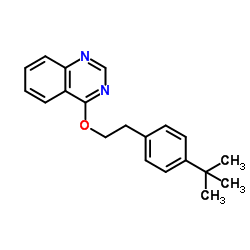Effect of household processing on fenazaquin residues in okra fruits.
Anil Duhan, Beena Kumari, Rachna Gulati
文献索引:Bull. Environ. Contam. Toxicol. 84(2) , 217-20, (2010)
全文:HTML全文
摘要
Fenazaquin (4-[[4 (1,1-dimethylethyl) phenyl] ethoxy]quinazoline) is a new acaricide of the quinazoline class. Residue levels of fenazaquin were determined in unprocessed and processed okra fruits to evaluate the effect of different processes (washing, boiling and washing followed by boiling) in reduction of residues of this pesticide in okra. The study was carried out on okra crop (Variety, Varsha Uphar) in research farm of Chaudhary Charan Singh Haryana Agricultural University, Hisar with application of fenazaquin (Magister 10 EC) @ 125 ga.i./ha (Single Dose, T(1)) and 250 g a.i./ha (Double Dose, T(2)). Samples of okra fruits were collected on 0, 3, 7, 15 days after treatment and at harvest (30 days). Residues were estimated by gas chromatograph equipped with capillary column and nitrogen phosphorus detector. Residues reached below maximum residue limit of 0.01 mg/kg at harvest. The residues dissipated with half-life period of 3.13 days at lower dose and 4.43 days at higher dose. Processing is shown to be very effective in reducing the levels of fenazaquin residues in okra fruits. Maximum reduction (60-61%) was observed by washing + boiling followed by boiling/cooking (38-40%) and then by washing (31-32%).
相关化合物
| 结构式 | 名称/CAS号 | 分子式 | 全部文献 |
|---|---|---|---|
 |
喹螨醚
CAS:120928-09-8 |
C20H22N2O |
|
Side-effects of fenazaquin on a cellular model of Paramecium...
2009-01-01 [Commun. Agric. Appl. Biol. Sci. 74(1) , 129-35, (2009)] |
|
Investigation in tea on fate of fenazaquin residue and its t...
2006-04-01 [Food Chem. Toxicol. 44(4) , 596-600, (2006)] |
|
Incidence and inheritance of resistance to METI-acaricides i...
2001-05-01 [Pest Manag. Sci. 57(5) , 443-8, (2001)] |
|
NADH: ubiquinone oxidoreductase inhibitors block induction o...
1998-11-01 [Pharmacol. Toxicol. 83(5) , 214-9, (1998)] |
|
Investigation in tea on fate of fenazaquin residue and its t...
2004-03-01 [Food Chem. Toxicol. 42(3) , 423-8, (2004)] |